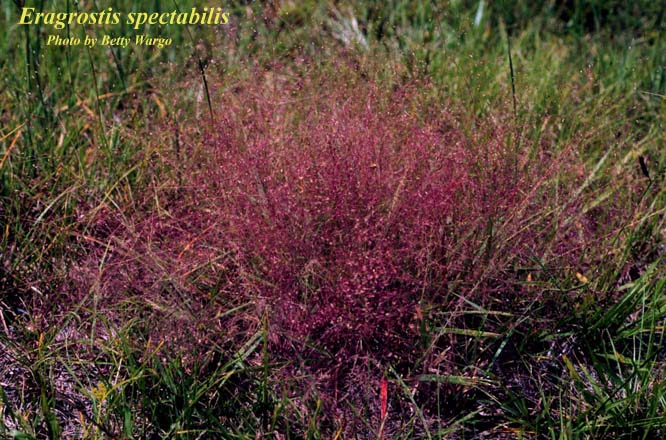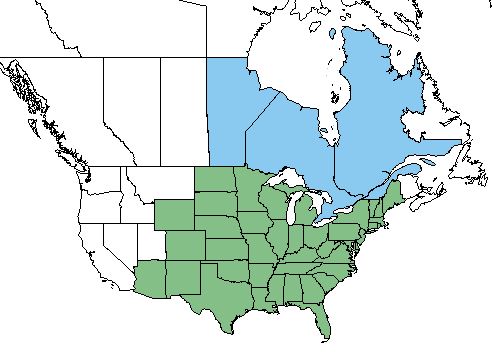Difference between revisions of "Eragrostis spectabilis"
| Line 1: | Line 1: | ||
{{italic title}} | {{italic title}} | ||
| + | Common Names: Purple Lovegrass <ref name= "USDA"> [https://plants.usda.gov/core/profile?symbol=CEAM USDA Plant Database]</ref> | ||
<!-- Get the taxonomy information from the NRCS Plants database --> | <!-- Get the taxonomy information from the NRCS Plants database --> | ||
{{taxobox | {{taxobox | ||
Revision as of 14:30, 14 June 2018
Common Names: Purple Lovegrass [1]
| Eragrostis spectabilis | |
|---|---|

| |
| Photo by the Atlas of Florida Plants Database | |
| Scientific classification | |
| Kingdom: | Plantae |
| Division: | Magnoliophyta - Flowering plants |
| Class: | Liliopsida - Moncots |
| Order: | Poales |
| Family: | Poaceae |
| Genus: | Eragrostis |
| Species: | E. spectabilis |
| Binomial name | |
| Eragrostis spectabilis Pursh | |

| |
| Natural range of Eragrostis spectabilis from USDA NRCS Plants Database. | |
Contents
Taxonomic Notes
Synonym:E. spectabilis var. sparsihirsuta (Farwell)
Variety: none
Description
E. spectabilis is a perennial graminoid o the Poaceae family native to North America. [1]
Distribution
E. spectabilis is found throughout the majority of the 48 continental United States excepting the far west. It has also been introduced to eastern Canada. [1]
Ecology
Habitat
Ideal habitats for E. spectabilis are sandy fields, roadsides, and woodlands. [2]
Seed dispersal
The weak seedheads at the top of the grass stalks will break off and get dispersed by the wind. [1]
Fire ecology
Controlled annual burning is beneficial to the grass. It will increase if the region is annually burned. [1]
Use by animals
E. spectabilis is used by livestock for grazing in the spring. Deer will dig up the basal part of the stem and eat it during the winter. [1]